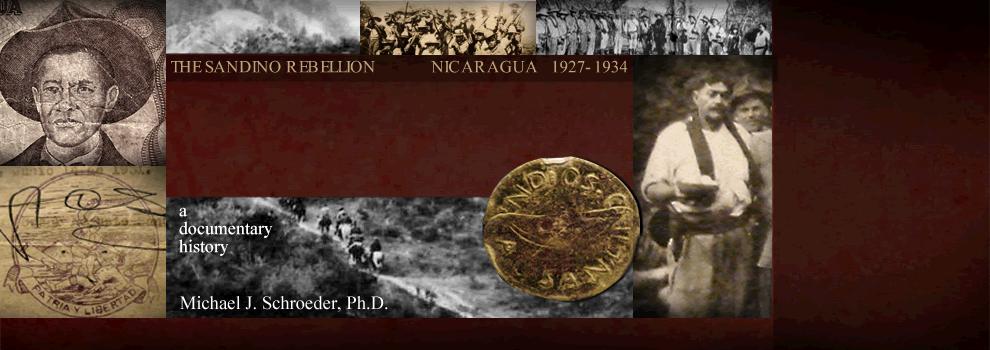|
Photo MCRC-2.1.
Four Marines seated outdoors.

|
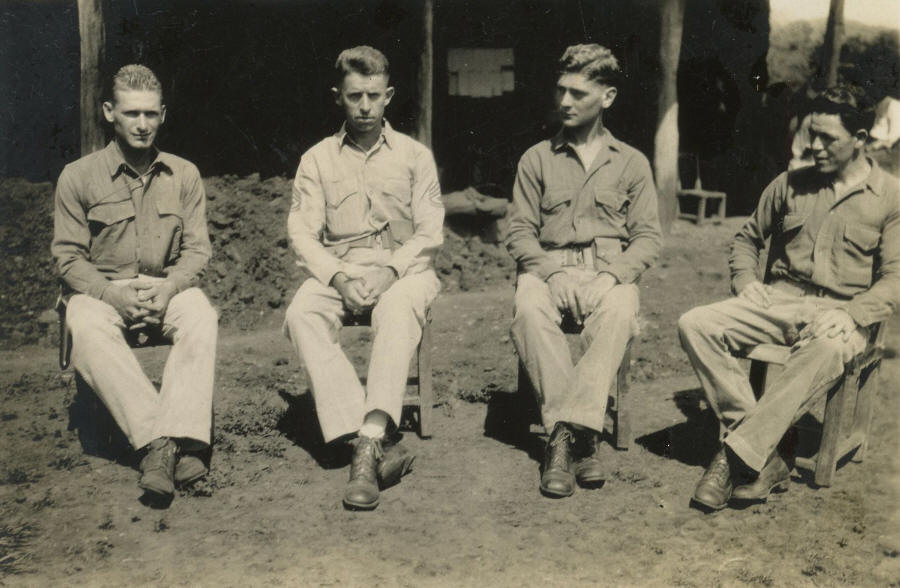
Four Marines seated outdoors, no
caption, no date. Rather an odd
seating arrangement & image; formal body
language and arrangment of chairs mixed
with an extremely informal setting; note
the pile of freshly-dug earth behind the
men, also seen in the photo below.
A foundation for a new building? A
latrine? The papers hanging on the
board against the building suggest this
might be a Marine Corps barracks. |
|
Photo MCRC-2.2.
Two Marines and one native
seated outdoors.

|
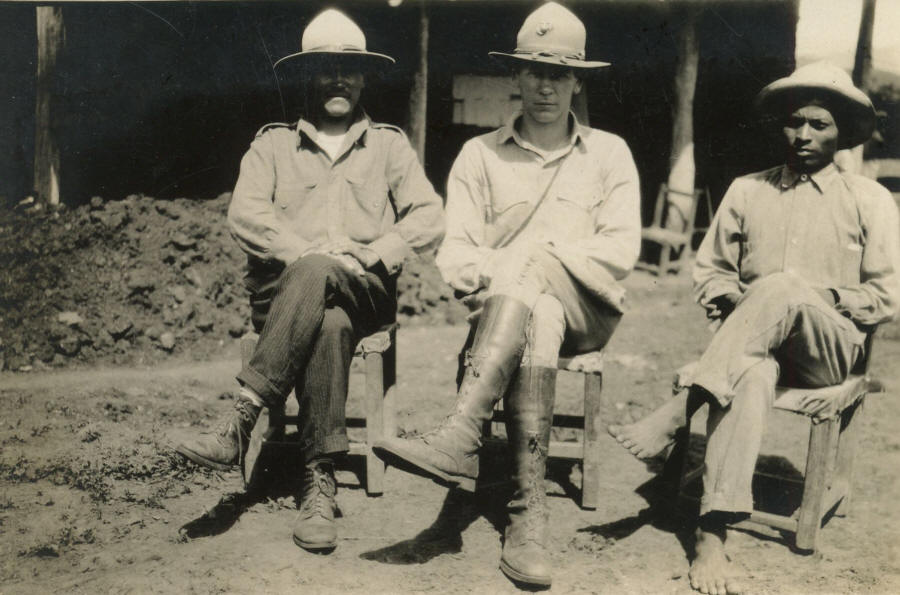
Two Marines and one native seated in the
same location as the photo above -- same
chairs and same time of day, judging
from the shadows. In this photo
too, all three evince serious
countenances and exude formality of
presentation in a very informal setting,
though in this image the bare feet of
the native contrast sharply with the
well-shod feet of his companions.
These two photos together show seven
North Americans and one Nicaraguan.
Wonder who he was? |
|
Photo MCRC-2.3.
Election Day, San Lucas near
Somoto, 4 November 1928.

|
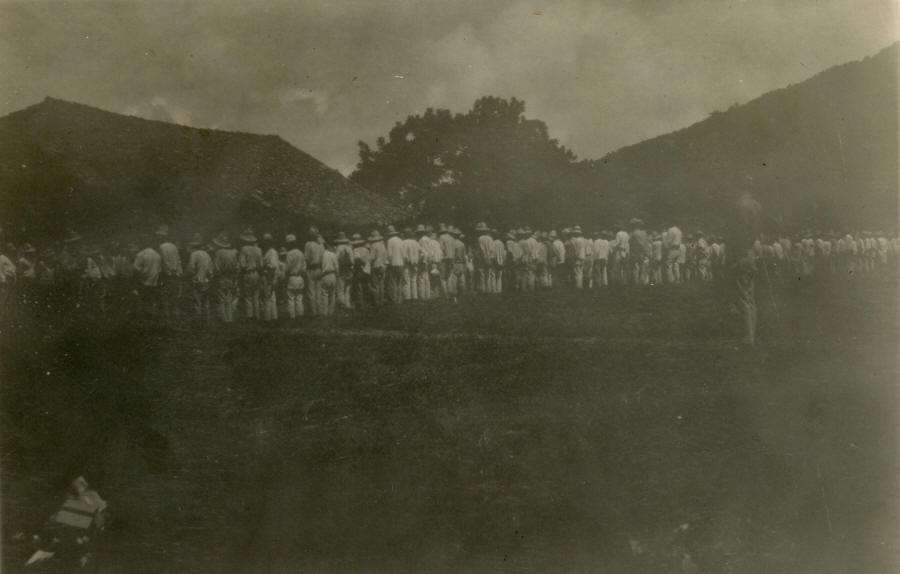
"Election Day in the Hills, San Lucas,
Nic. Nov. 4, 1928" A very
big day, in fact, on which turned much
of the political violence of the
preceding 18 months, with this place as
one of its epicenters. One can
count at least 70 people in the voting
queue, and a handful of Marines (or
native Guardia or officials) outside the
line. The village of San Lucas near
Somoto was & is a fascinating place,
with its long & convoluted history of
political violence, indigenous struggle,
and borderlands-related conflicts.
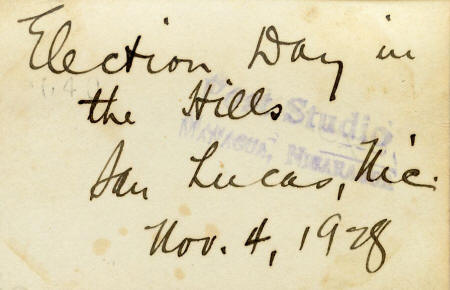 |
|
Photo MCRC-2.4.
Graves of two Marines in Somoto.

|
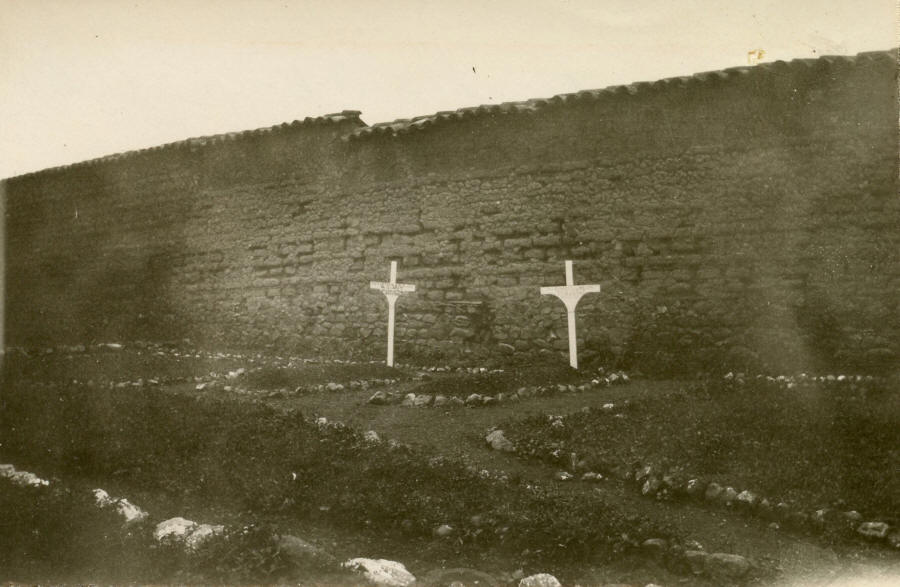
"Somoto, Nicaragua. Graves of two
Marines killed in action, one Dec. 1927;
one Feb. 1928. —"
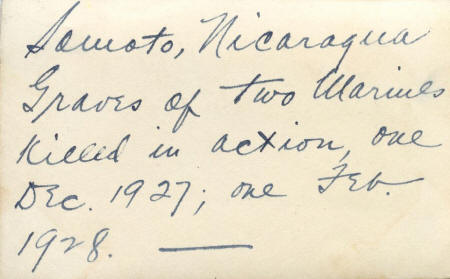
|
|
Photo MCRC-2.5.
Marines butchering a calf in the
field.
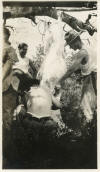
|
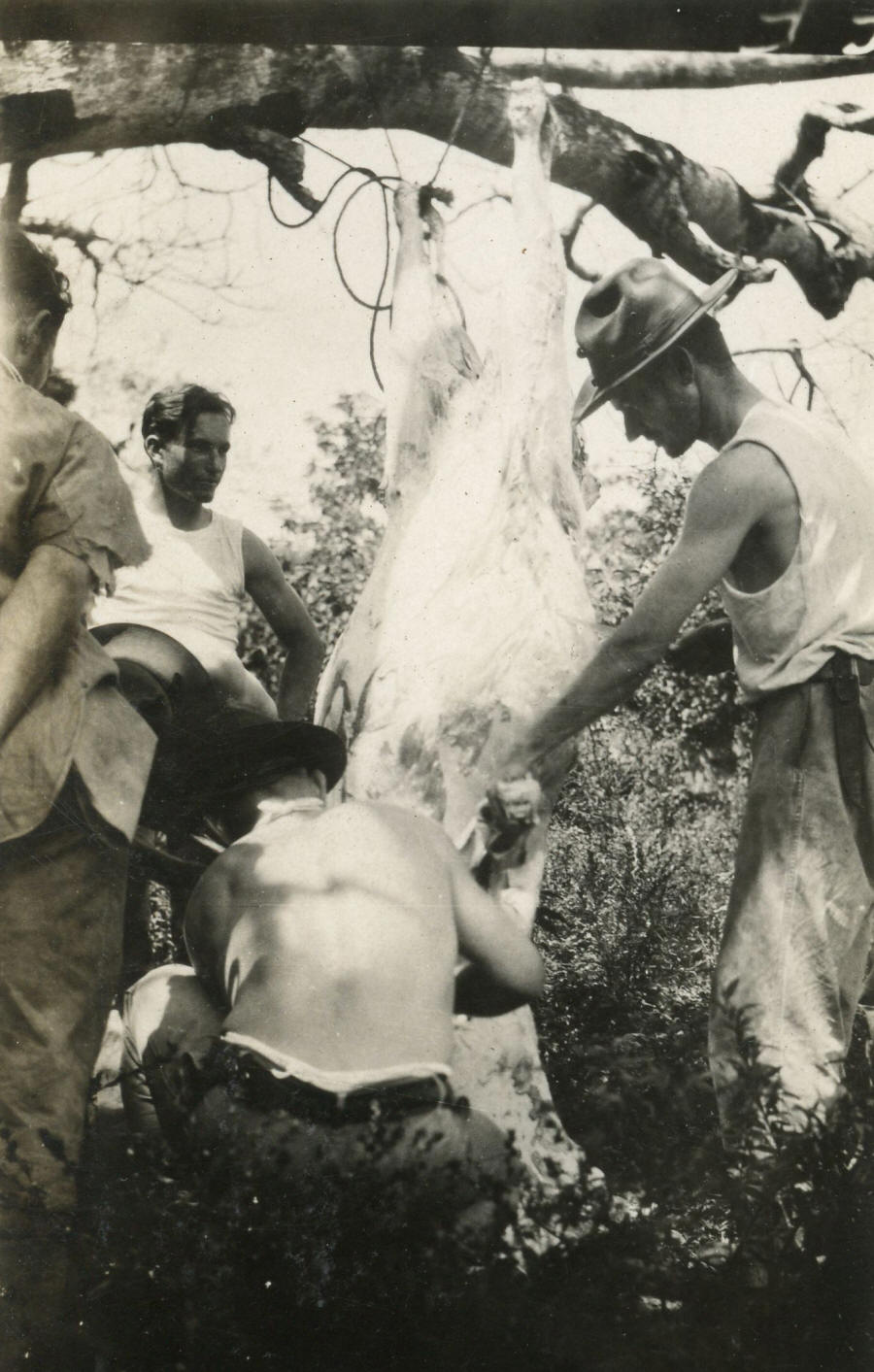
Marines butchering a calf in the field.
The question of what soldiers eat opens
up the bigger question of how states pay
for war, the answers to which varied &
on which hinged many of the dynamics of
this entire period. Did the four
leathernecks pictured here buy this
calf? Probably, though it's impossible
to know in this case, since the Marines
both purchased & stole food from natives
depending on a host of variables. This
must have been a very common sight.
|
|
Photo MCRC-2.6.
Segovian mountains draped in
fog.

|
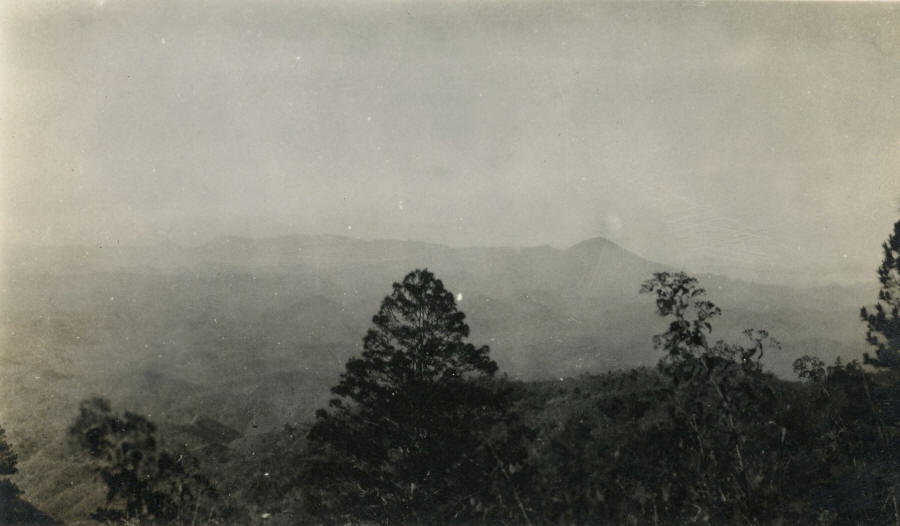
Segovian mountains draped in fog.
Somoto Valley?
|
|
Photo MCRC-2.7.
Segovian mountains shrouded in
fog.

|
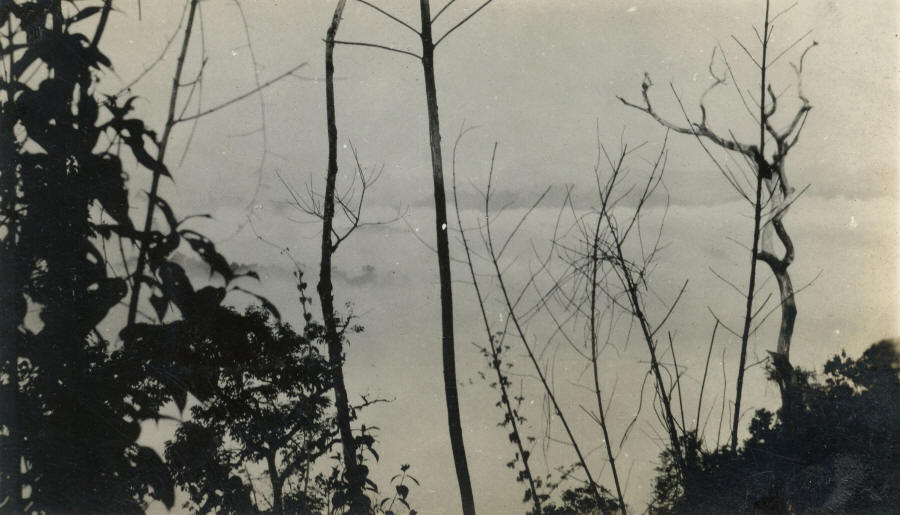
Fog-enshrouded mountains in this series
probably from 1928 around Somoto-San
Lucas.
|
|
Photo MCRC-2.8.
Segovian mountains in fog.

|
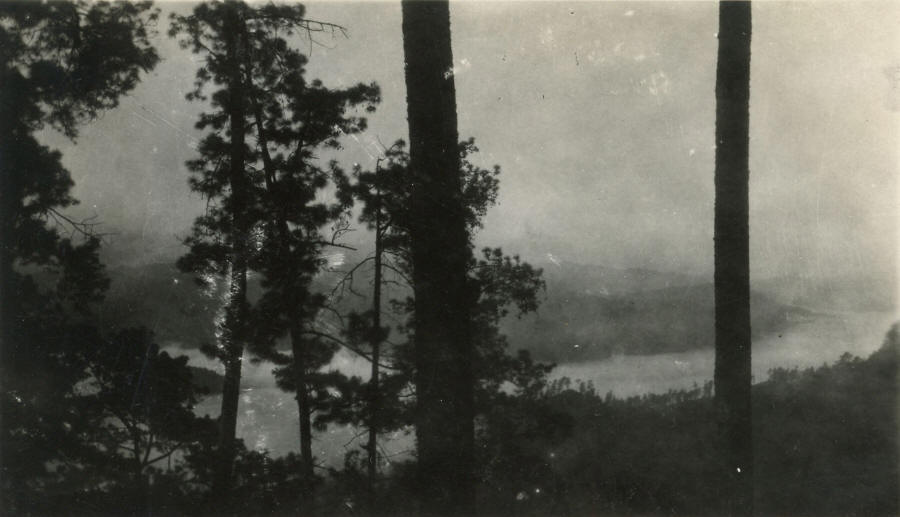
Fog-enshrouded valley, probably around
Somoto-San Lucas, ca. 1928.
|
|
Photo MCRC-2.9.
More fog enshrouded Segovian
mountains.

|
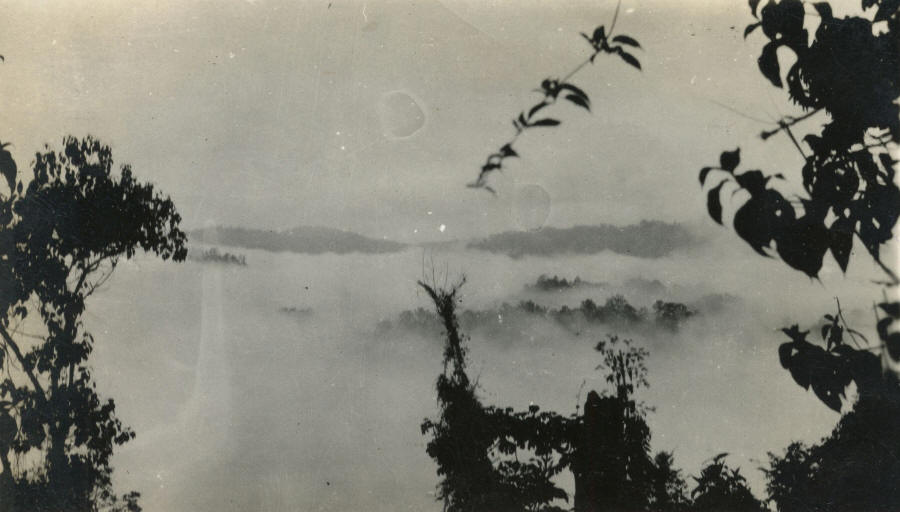
Another fog-enshrouded valley, probably
around Somoto-San Lucas, ca. 1928.
|
|
Photo MCRC-2.10.
Mounted Marine patrol ascending
hill.

|
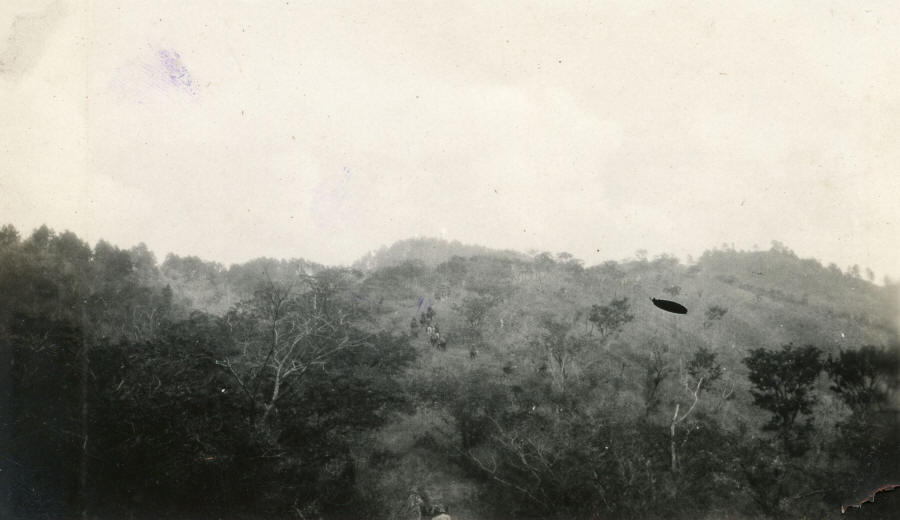
A mounted Marine patrol ascends a hill,
probably around Somoto-San Lucas, ca.
1928. Below: close up
of the central part of photo.
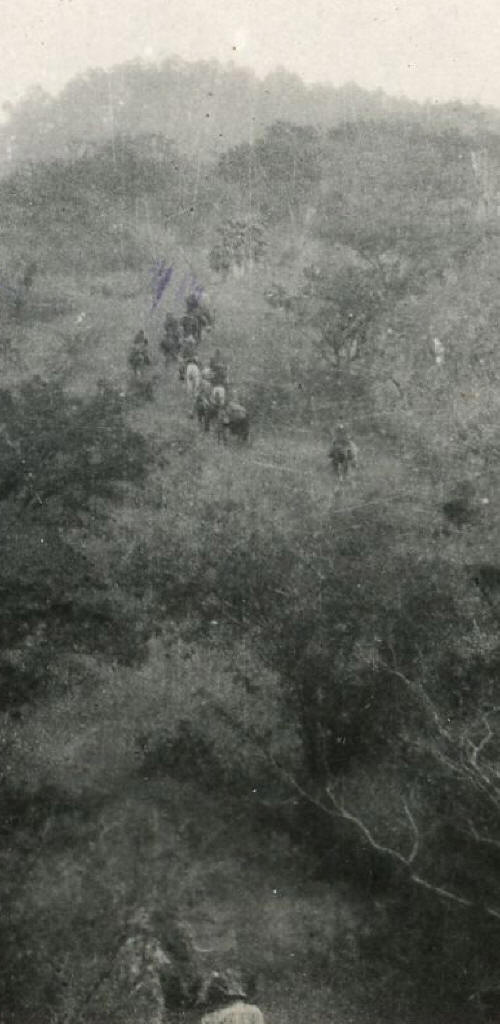
|
|
Photo MCRC-2.11.
Segovian village nestled in
mountains.

|
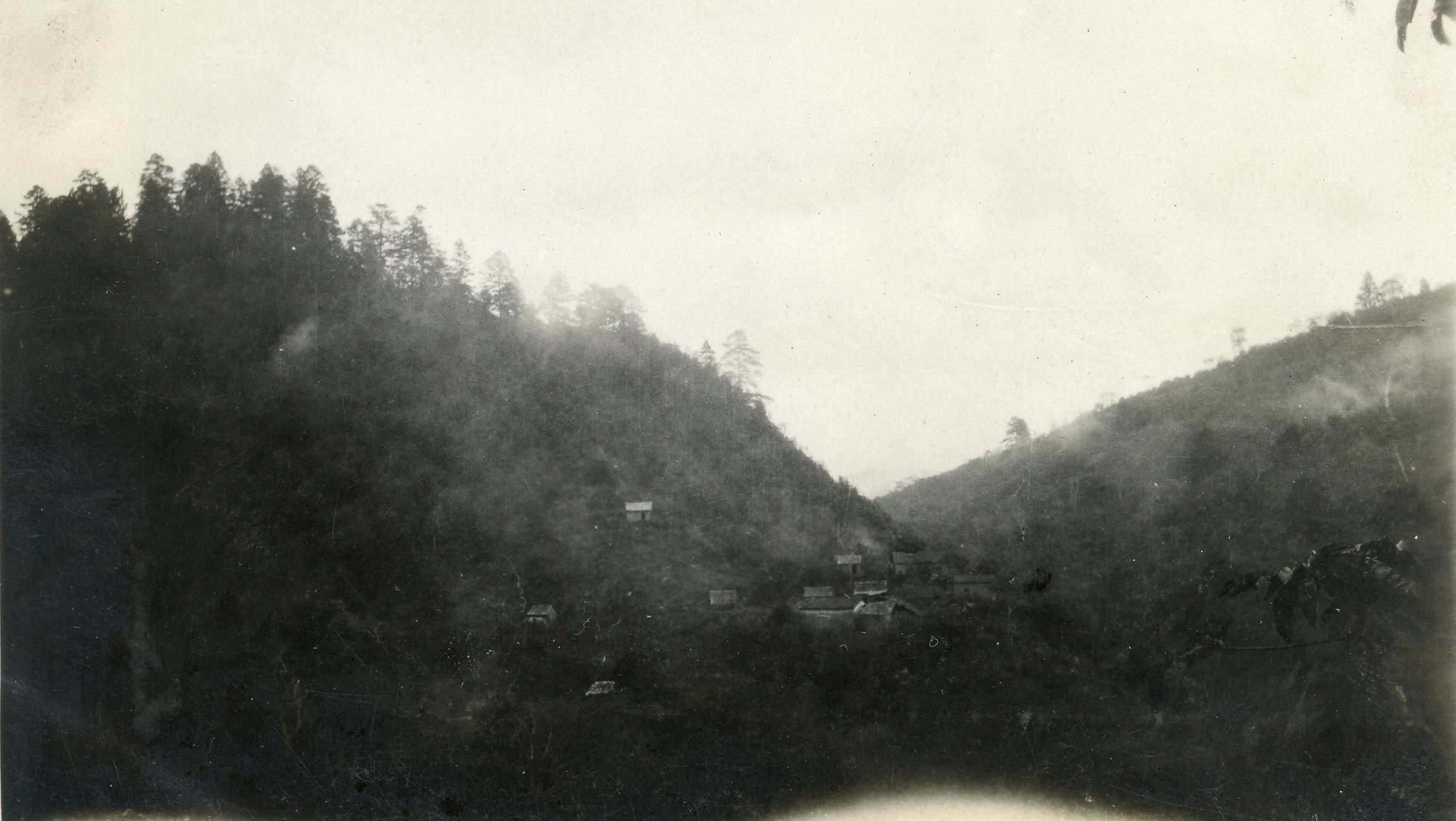
Village nestled in the mountains in the
Western Segovias. Below:
close up of the central part of photo.
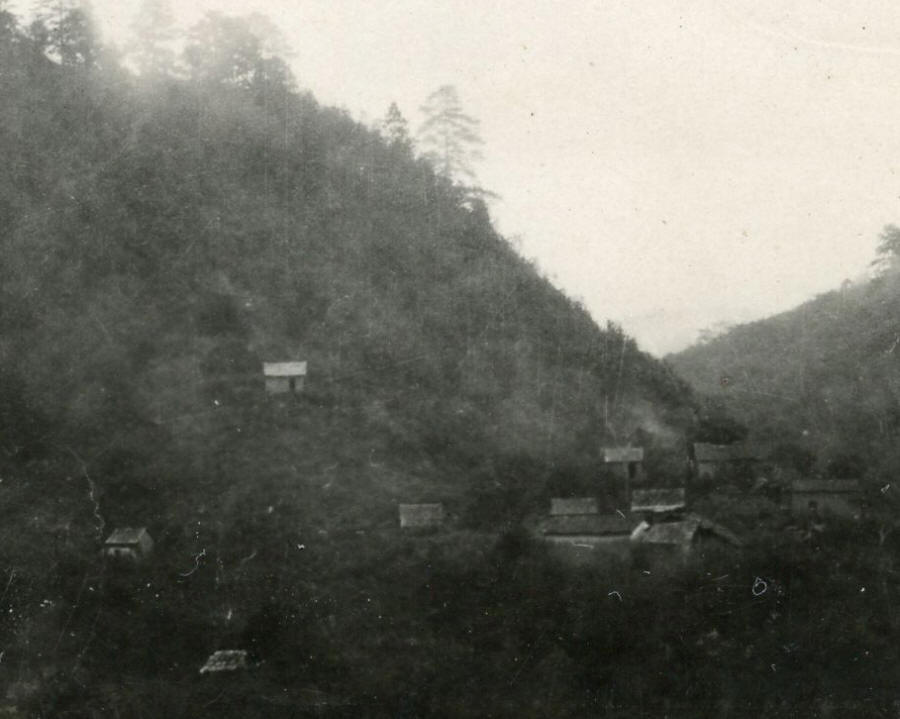
|
|
Photo MCRC-2.12.
Segovian mountains with Marine
patrol in foreground.

|
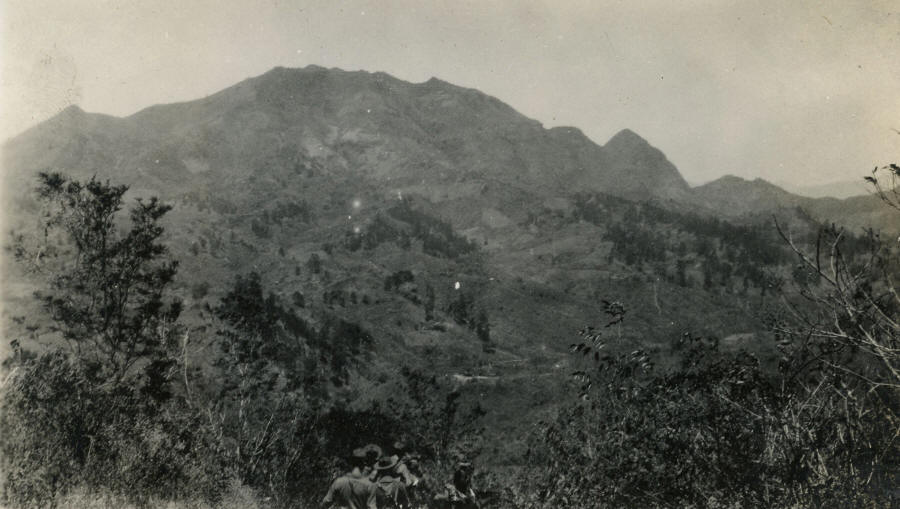
Magnificent view of Segovian mountains,
with Marine patrol in foreground.
|
|
Photo MCRC-2.13.
Segovian village, or perhaps
mining operation.

|
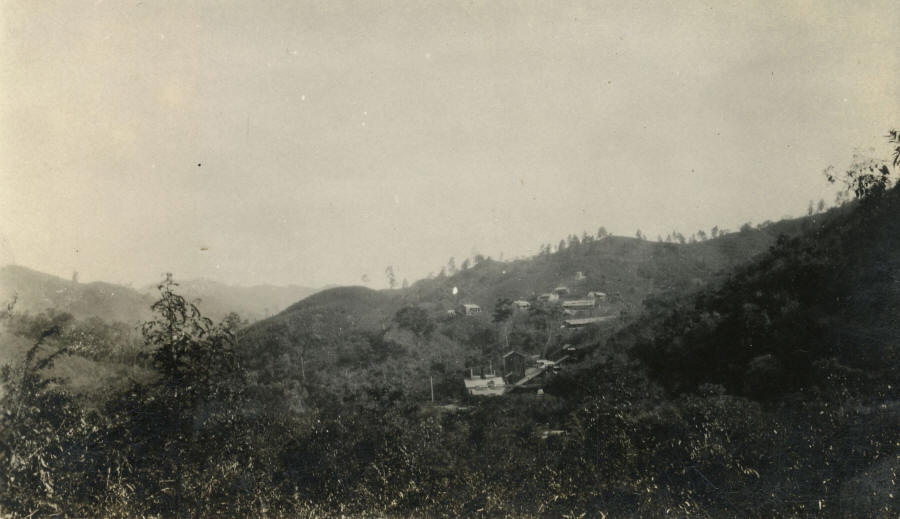
Village, or perhaps a mining operation,
nestled in the Segovian mountains; close
up of central part of photo below.
Note the multi-story building, what
appear to be conveyor-belt like
structures, and the large barracks-like
building at right.
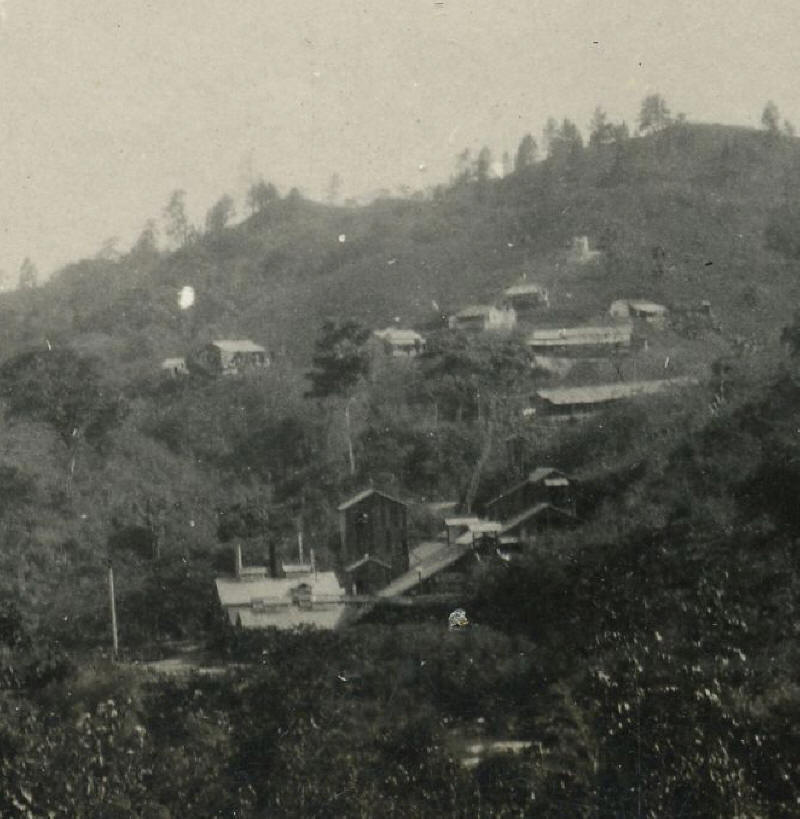
|
|
Photo MCRC-2.14.
Volunteer forces between Santa
María and Yucatál.

|
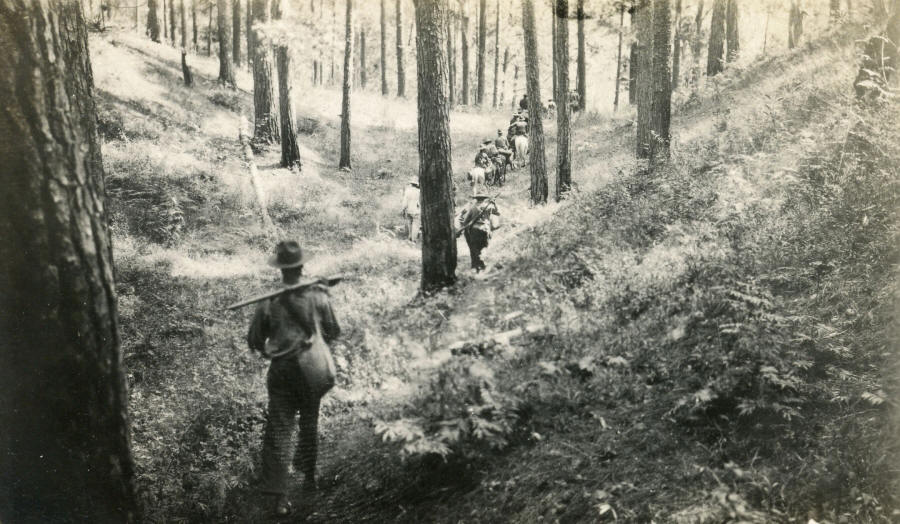
"Volunteer forces between Santa María
and Yucatál, Nicaragua"; the same photo
published elsewhere with the foregoing
caption.
|
|
Photo MCRC-2.15.
Volunteer forces between Santa
María and Yucatál.

|
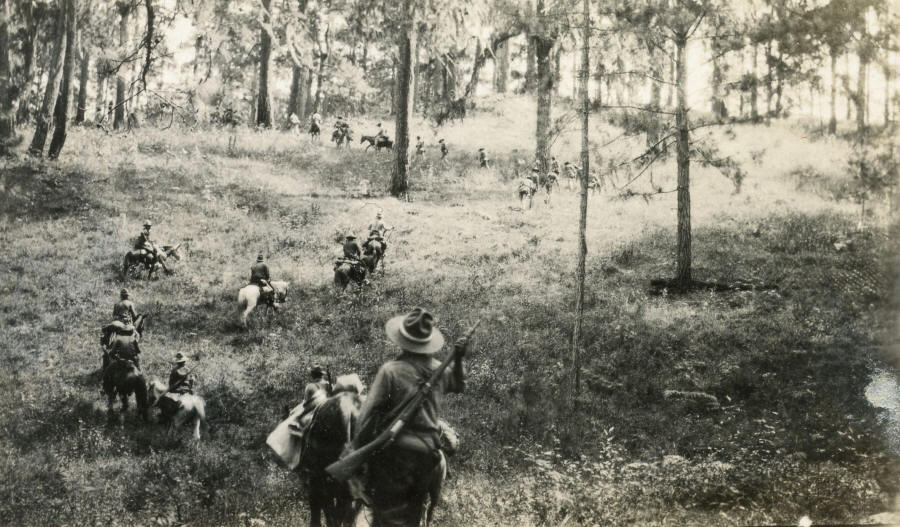
Volunteer forces on the same day and in
the same area as the photo above.
|
|
